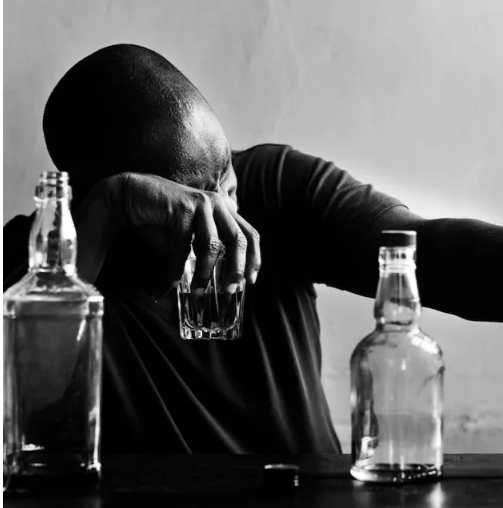7 Essential Steps for Addiction Recovery in Palm Springs
7 Essential Steps for Addiction Recovery in Palm Springs. Pursuing full sobriety can seem like a daunting prospect for chronic addicts. With drug and alcohol cues ubiquitously looming over our heads, it’s almost impossible to shrug off relapse urges. However, addiction recovery isn’t entirely out of reach.
By embracing a systematic approach and reaffirming your sobriety commitments each day, the journey to complete abstinence can turn out to be far less treacherous than previously thought. We’ve taken the liberty of putting together a seven-step process towards full addiction recovery in Palm Springs, California.
Define Your Addiction Type
Understanding your specific problem is vital in seeking proper treatment. Most addictions present as substance use disorder, with the most commonly misused substances being alcohol, cigarettes, and narcotics like cocaine and heroin.
The good news is that you can find an addiction treatment in Palm Springs, CA dedicated to addressing your specific addiction problem. Certain rehabilitation centers treat different addiction types, whereas others target particular conditions.
Admit You Have a Problem
Downing one or two bottles of alcohol every week may not sound like an addiction. But if you can barely function before taking the drink, then you certainly have an addiction problem. Another way to tell that you have an addiction problem is if the substances you’re dependent on have ruined your life in some way.
Perhaps you frequently check into the hospital for drug- or alcohol-related issues. Or, a significant portion of your income goes directly to substance abuse! It’s even worse if you’ve previously lost your job due to your drinking or drug problem. What of your social life – is alcohol impeding your ability to navigate family and relationship dynamics. If any of these scenarios is true, then your substance use problem requires prompt intervention.
Seek Help
Now that you’ve admitted a problem, it’s only fair to seek immediate help. Assistance for drug addiction can come from multiple quarters, including support groups and talk therapies. But for chronic addicts, the best option is checking into a rehabilitation center.
Find a rehabilitation facility in Palm Springs with programs that cater to your specific addiction problem. The rehab should be situated in a serene environment with minimal distractions, allowing you to focus entirely on achieving complete sobriety. It’s also best to prioritize rehabilitation centers offering a holistic recovery approach. Besides treating the primary addiction problem, the facility should also address co-occurring disorders.
Detox!
Detoxification provides the most reliable path to recovery for chronic addicts. It enables you to flush traces of alcohol and drugs from your system before embarking on the next round of treatments. An effective detox program shouldn’t merely emphasize complete abstinence. It should also be premised on proper medication and nutritional support.
Usually, you’ll be placed under potent sedatives to alleviate the ensuing withdrawal symptoms, including headaches, muscle pain, anxiety, and fatigue. The rehab center will also introduce you to foods that help manage cravings while combating resultant nausea and vomiting. Depending on the efficacy of the detox program, you can expect the withdrawal symptoms to subside within a week or two.
Develop a Relapse Strategy
As previously mentioned, alcohol cues are all around us. Unless you live on an isolated island, you’ll occasionally encounter objects, television advertisements, and even memories that could trigger a relapse. This underscores the significance of creating a robust relapse strategy. The best way to develop a relapse strategy is to avoid situations that could trigger alcohol cravings. Get rid of all alcohol-related objects in your house.
Sometimes, it takes one old wine bottle to cause a relapse. Next, create an outdoor routine where you intentionally avoid venturing close to pubs and bars. Take a long detour to work if necessary. Unfortunately, a robust relapse strategy may also require losing your erstwhile drinking buddies. It’s a worthwhile sacrifice to make on the road to sobriety. Other interventions include attending support groups, scheduling emergency sessions with your addiction therapists, and reentering rehab.
Make Healthy Lifestyle Adjustments
Certain lifestyle adjustments can support your quest for alcohol recovery. For instance, you could ramp up your physical activity. One study found that youth who engaged in regular workouts reported increased self-esteem and reduced relapse risks.
Exercise stimulates the release of endorphins, the same pleasure hormones whose production often peaks with alcohol consumption. It’s also recommended to get a good night’s sleep. Besides improving your overall immunity, adequate sleep can combat certain withdrawal symptoms, including irritability and drowsiness.
Build a Social Support System
Family and friends can play a vital role in addiction recovery, especially after an inpatient treatment. Close family members will always want the best for you. As such, they can motivate you to stay sober by providing a supportive environment at home.
Your social support system may also aid your recovery journey by creating a healthy, rewarding system. Each sobriety milestone achieved is rewarded, energizing your quest for complete abstinence. To make the most of social support, ensure you only collaborate with non-addicts.
Wrap Up
No two addicts are similar. To accelerate your journey to sobriety, it’s important to define your unique challenges and seek out suitable therapeutic interventions.
Remember to also celebrate every milestone achieved on the road to sobriety. Through these small wins, you can marshal the much-needed motivational boost and inch closer to your ultimate objective – complete abstinence.
